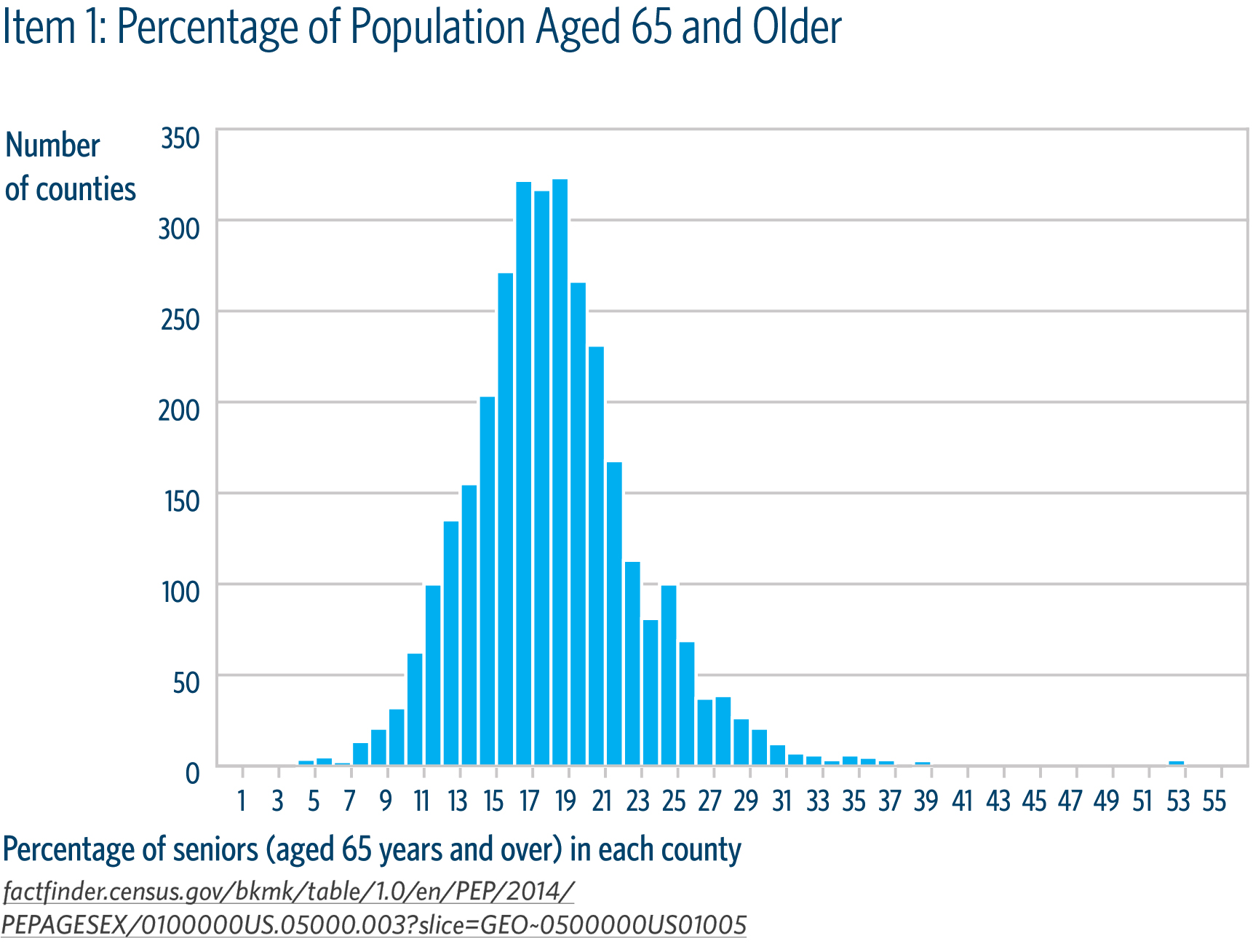Visualization types
Histogram
A histogram is a chart that displays numeric data in ranges, where each bar represents how frequently numbers fall into a particular range.
Like a bar chart, histograms consist of a series of vertical bars along the x-axis. Histograms are most commonly used to depict what a set of data looks like in aggregate. At a quick glance, histograms tell whether a dataset has values that are clustered around a small number of ranges or are more spread out.
Examples
Static Histogram

Guidance
In addition to the guidance provided in this section, relevant guidance can also be found in the Agency Logo, Axes, Colors, Grids, Labels, Legends, Source, Titles, Typography sections.
Requirements
Always
-
Include the frequency measurement on the y-axis and ranges on the x-axis.
-
Start the y-axis at zero.
-
Use a single color for all bars, except when using one additional color to highlight a single bar.
-
Use at least three intervals/ranges.
Never
-
Never add spacing between bars. Bars span the entire range of values for the continuous variable.
Recommendations
Not Recommended
-
Don’t orient a histogram upside down.